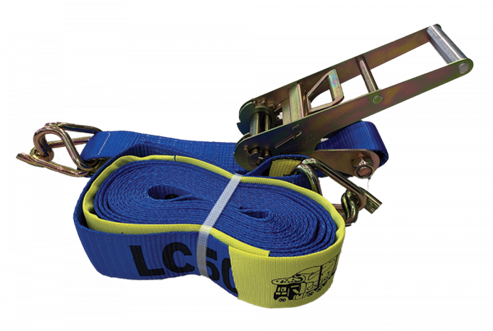 Oct
27
Oct
27
4 Vital Considerations to Make Before Buying Custom Ratchet Straps
- 27/10/2022
- 0 Comment(s)
Ratchet straps are used to tie down and secure cargo when you’re transporting loads from one place to another. There are many variables to consider when purchasing your most workable ratchet straps, even more so if they’re custom-made.
If you’re having them custom-made, think about several options that will best align with your objectives when transporting large items. This can range from the size and weight of your cargo to the conditions in which you’re travelling and the type of webbing you need for your application.
Your main goal is obviously to transport your cargo to its destination safely and securely, without causing any damage. There are also various tie-down options available, such as ropes, bungee cords and cargo nets, but ratchet straps have become the most reliable of the lot. Here’s what you need to think about when picking yours.
How Much Weight Your Straps can Handle
One of the more important facets you need to know when looking for the right ratchet straps is determining their Working Load Limit (WLL). You have to calculate the strap’s WLL by taking the breaking strength of the strap or the point of failure, and dividing that value by three.
If you’re aware of the WLL, you’ll know how secure your straps are in cases of braking sharply with your vehicle or changing lanes suddenly, without jeopardising the safety of your cargo. This also goes hand-in-hand with using enough straps—if one breaks, make sure there’s still sufficient support from others.
Before you purchase a ratchet strap you first need to work out how much your cargo weighs. Then make sure the maximum weight of your load is not greater than the combined WLL of your ratchet straps.
For example, if your cargo weighs up to 500kg and you have two ratchet straps, then their combined WLL should be greater than 500kg. It’s as simple as that!
Length of Your Straps
Similarly, before you purchase your ratchet straps you will need to calculate the girth of your cargo. This tells you how long your desired straps must be. If your straps are too short they won’t be able to wrap securely around your load.
Conversely, if your straps are too long, the unused part of the webbing will be too loose, so your cargo may shift during transport.
However, of the two shortcomings, having a lengthy strap is better. This is because manufacturers have created components such as housings and wrappers, which are responsible for reeling in loose ends to match your desired lengths. Alternatively, you can also cut your straps shorter.
Your Choice of Webbing
Webbing refers to the fabric used in making your ratchet strap, and the choice you make in this regard is important for your tie-down application. While you calculate how much weight your straps can handle you also need to decide which type of webbing will best coincide with that.
You can decide between webbing of different thickness designs. Pick depending on the weight of your load and in which conditions you plan to travel. If you’re a regular truck driver you may want a slightly longer strap with heavy-duty webbing to provide more durability in transporting heavy loads.
Heavy-duty webbing obviously lasts longer. When your ratchet straps begin to weaken over time the deterioration of the webbing is almost always to blame. Strap protectors, which form a layer between your webbing and cargo, are useful in protecting your ratchet straps in these cases.
For transporting cargo in harsher conditions such as rainfall, sleet or snow you may also need to opt for webbing that can withstand that, and which will provide enough grip against your cargo.
On the other end, you may also not want to use webbing that is too vigorous since it can damage lighter and more fragile cargo items, especially if they have to be tied down well.
Your Ratchet Strap Hardware
When you choose your ratchet strap you need to know which types of hooks will be able to work with your vehicle. All vehicles have different tie-down points, which essentially act as anchors for your straps to be hooked to. Ratchet strap designs include hooks such as:
- S- and J-hooks: These are usually attached to flatbed anchor points or car bumpers.
- Flat hooks: These are ideally used for flat anchor points where rounded hooks won’t fit.
Moreover, your hardware options should correlate with the strength of your straps and webbing. If your ratchet straps are designed to be heavy-duty, then so should your hardware components, such as the hooks, ratchet levers, centre latches and handles.
Your strap will only be as strong as its weakest link!
[Conclusion]
Ultimately, ratchet straps will be able to take care of all your tie-down applications – both for heavy and light duty purposes, and for all lengths and strengths. Ratchet straps are capable of withstanding almost all your cargo specifications.
You just need to know how to pick the right straps to best fit your requirements. To learn about what customised solutions we offer you can call us on 1300 577 797 or email us at sales@loadrestraint.com.au.
